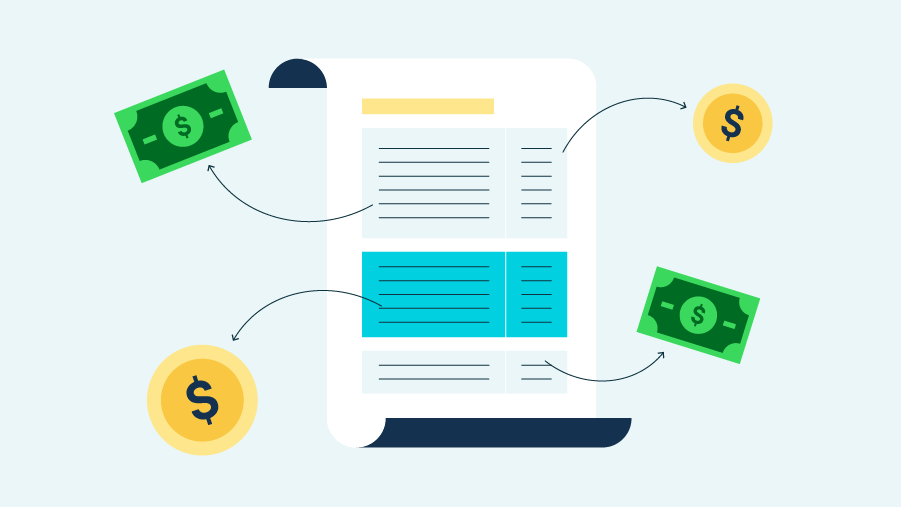1. Practice calculating it yourself
A great way to understand cash flows in business is to practice calculating them. Here are the steps to get you started using the direct method:
- Collect information: Identify the period you plan to analyze and collect information from income statements, balance sheets, and bank statements.
- Collect your CFO information: Collect information on cash sales to customers and collections from accounts receivable and subtract it from cash payments to suppliers, employers, utilities, or other operating expenses.
- Collect your CFI information: Collect information from cash from the sale of long-term assets and subtract the cash spent on purchasing other long-term assets.
- Collect your CFF information: Collect information from cash received for financing activities, like issuing stock or borrowing money, and subtract it from debt or dividend payments.
- Summarize your cash flows: Add up the cash flows from the three activities to get your total net cash flow number.
You can also choose the indirect method to retrieve this information, which starts with net income, adding back noncash expenses while adjusting for changes based on your working capital. You can adjust these steps to focus on operating, investing, and financing cash flows.
2. Collect cash sooner
Getting money sooner boosts short-term cash flow. You can improve the speed of cash flow by providing incentives for faster payments and encouraging buyers to pay for a portion of the invoice upfront.
Buyers will be encouraged to pay sooner by offering discounts to those who pay before the due date. For example, you can offer a 2% discount if you get the payment within 10 days of invoicing. Remind customers via text or email about any early payment promotions.
Another way to encourage early payments is to impose penalties, such as late fees, for those who make payments three or more days late. Customers may frown upon late fees, but fees provide an incentive to keep your payments coming on time. Include these as part of the payment terms when making a sale.
You should also make invoice payments simple and flexible, covering the customer’s preferred method. Use QuickBooks Money to send instantly payable invoices that get paid faster than paper invoices.
Customers can choose the payment method that’s most convenient for them, including credit or debit card, ACH bank transfer, Apple Pay, PayPal, or Venmo. You can even request same-day deposits at no additional cost.
3. Improve inventory management
Improving inventory management can get products out of your door faster. Receiving products quickly will encourage customers to pay faster. It will also help you receive new inventory to sell at a faster rate, helping you maintain a consistent cash flow.
Here are just a few inventory management strategies:
- Use effective technology: Rely on tools, like QuickBooks Advanced Inventory, to track results and automate processes to help reduce human involvement. Fewer human errors will result in a smoother inventory flow.
- Establish inventory controls: Understand what inventory control system works for your business. For example, if you sell high-value items, you might benefit from an always better control (ABC) system.
- Forecast demands: Predict future needs to help avoid stockouts or overstocking, which can delay inventory shipments. Demand forecasting tools are part of some inventory management tools.
When managing inventory, you should also consider the effectiveness of current suppliers necessary to get your inventory out. For example, if one of your suppliers is consistently behind schedule, discuss your problems with them or consider other suppliers.
4. Build cash reserves
Cash reserves help cover you when your cash flow slows down or stops. As a business owner, you can't expect every speed bump. However, it does help to have a rainy-day fund to pay for any unforeseen expenses.
Companies should keep enough cash to cover business expenses for three to six months. To find out how much you need, review your cash flow statements from the past few months or years. This will reveal what you’ll need to build a comfortable reserve.
5. Project your cash flow
Cash flow projections give you a look at future cash flows, which can be anywhere from a few months to years later. Knowing your short- and long-term cash needs will help you better prepare for the upcoming months.
When projecting your cash flow, look at past cash flow information from sales and accounts receivable. Then, subtract both your fixed and variable costs from this amount. Consider any unusual events that might be throwing off numbers for that month, such as unusual shipment delays, as including those could throw off your budget.
Projections are how you set up a realistic budget for your business. This budget information can help you make more confident financial decisions.



















